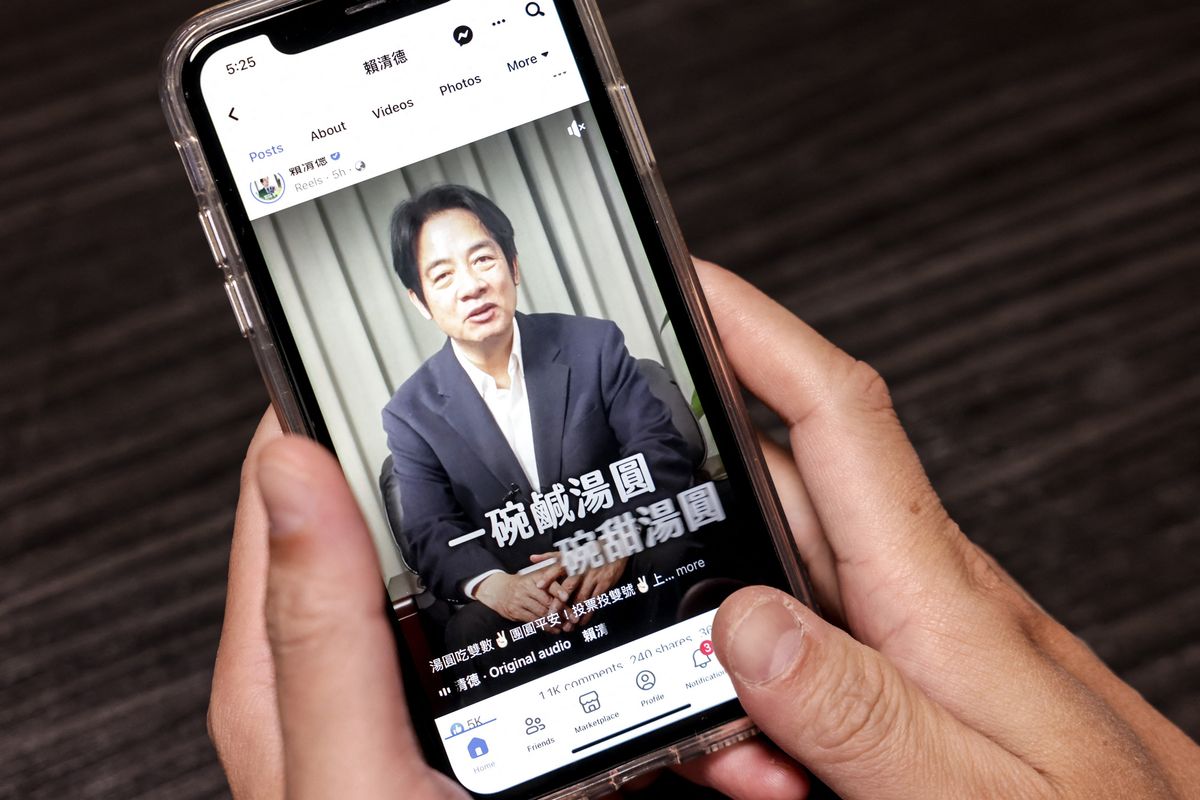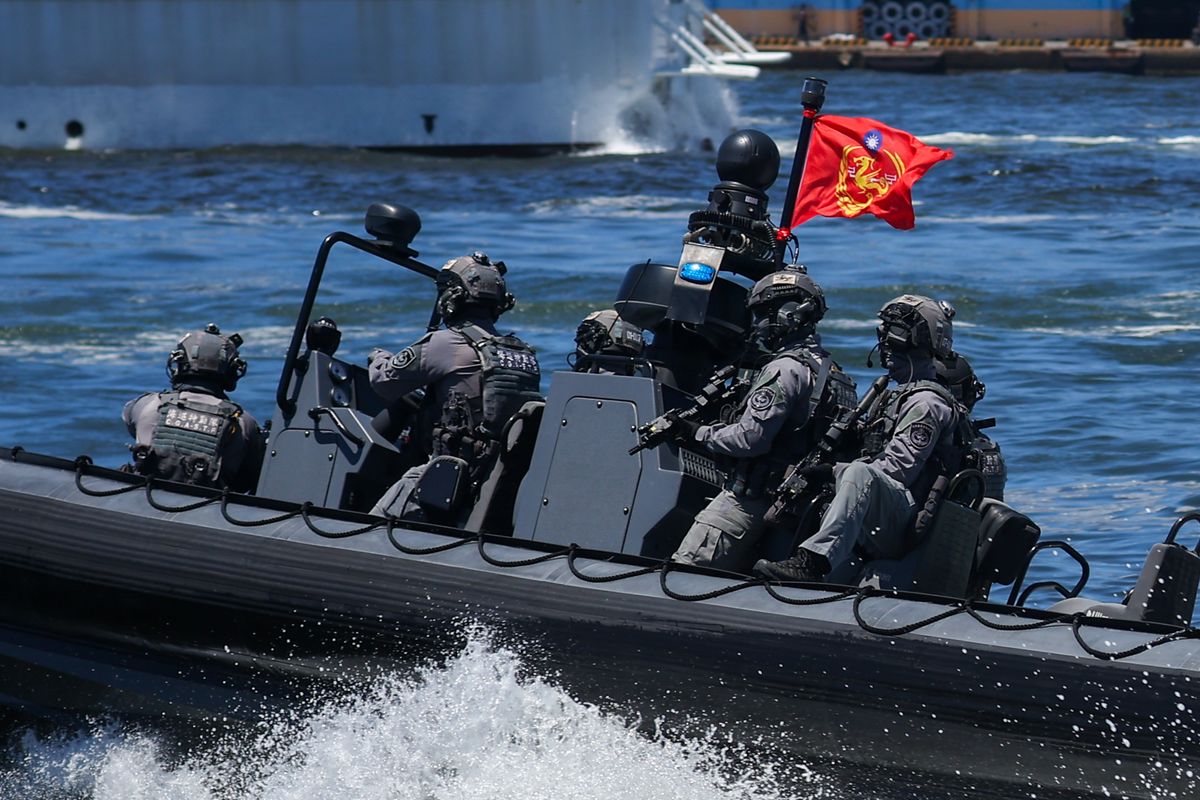OPINION — Despite U.S. officials regularly voicing concern about lack of knowledge as to where China’s nuclear weapons program has been going, officials have known for years that Beijing aimed to become “a mature nuclear weapon state and a quasi-peer to the United States in the nuclear realm.”
That’s a quote from a year-old essay by Dr. Brad Roberts, who has, since 2015, served as the director of the Center for Global Security Research at Lawrence Livermore National Laboratory. Before that, he served as Deputy Assistant Secretary of Defense for Nuclear and Missile Defense Policy from 2009 - 2013.
Roberts went on to say that China “is not becoming a Russia-like peer with a nuclear force sized and operated in ways very similar to that of the United States. Nor is it becoming a near-peer with a nearly-as-good nuclear force. But it is becoming a quasi-peer—with a nuclear force that is resilient in the face of potential attack and capable of assured retaliation at a level and scale posing a significant threat to the United States, and with the apparent intent to use that force to safeguard China’s interests at both the strategic and regional levels of war.”
Roberts wrote that essay and another for the December 2020 Livermore publication which he edited titled, Taking Stock, U.S.-China Track 1.5 Nuclear Dialogues. It describes in detail how from 2004 through 2019, Chinese and American experts gathered once or twice a year in Beijing or Hawaii to discuss nuclear policy in a program of dialogues financed by the Defense Department’s Defense Threat Reduction Agency (DTRA).
Attending the 22 meetings, were experts from think tanks and academia, as well as former and current officials and junior and senior members of both countries’ military – all participating in their private capacities. They were referred to as Track 1.5 meetings vice Track 1 sessions, when officials gather for official meetings, and Track 2 where attendees are primarily academics.
The dialogues were most useful during the Obama years when, as described in Taking Stock, sessions included “briefings on official documents such as DoD NPRs [U.S. Defense Department Nuclear Posture Reviews] and MND’s [China’s Ministry of National Defense] Defense White Papers, as well as interpretation of each other’s nuclear policy/strategy, employment principles, deployment postures, and development strategies.”
Also discussed, as listed in Taking Stock, were future issues such as “emerging technologies including missile defense, hypersonic weapons, space, cyber, artificial intelligence (AI) technologies and implication to global, regional and bilateral strategic relation/stability, as well as cooperation in international rule setting for military application of emerging technologies.”
DTRA terminated the sessions in March 2020, following declining Chinese participation and the Trump administration’s frustration with China’s failure to agree to join the U.S. in three-way official arms control talks with Russia.
In September 2020, Roberts’ Center for Global Security Research, in partnership with the China Arms Control and Disarmament Association, held a two-day workshop with a dozen experts from both countries to review years of nuclear-focused dialogues and identify emerging problems and opportunities to improve the relationship.
The Cipher Brief hosts private briefings with the world’s most experienced national and global security experts. Become a member today.
That September 2020 session ended with both sides leaving the door open for the future resumption of these dialogues.
In her post-workshop analysis of the situation, Dr. Yao Yunzhu, a retired Major General in the People’s Liberation Army (PLA) and now a senior advisor to the China Association of Military Sciences, showed a sophisticated understanding of why the U.S. has not ever adopted, as China says it has, the so-called No First Use (NFU) declaratory posture when it comes to nuclear weapons.
Dr. Yao wrote, “The fact that the United States does not adopt an NFU strategy does not
necessarily mean that it holds a first-use policy. The nuclear weapon’s role in U.S. national security has been shrinking since the end of the Cold War and the nuclear weapon will be used only as a last resort and in extreme circumstances.”
She also indicated that she understood why China’s expansion of its nuclear arsenal would have a reaction in the U.S.
“Although the nuclear weapon has not been a big factor in defining the China–U.S. relationship,” Dr. Yao wrote, “it’s becoming more weighty as China expands its arsenal and the bilateral relationship turns tense, competitive, and even confrontational.”
Anyone who has read the Pentagon’s 2020 and 2021 reports on Chinese weaponry, which projected that Beijing could have at least 1,000 nuclear warheads by 2030, would think this to be a major growing threat to the U.S. That is despite the fact that today the U.S. has 1,550 nuclear warheads currently deployed on American ground- and sub-launched intercontinental ballistic missiles and strategic bombers and another 2,000 warheads in storage stockpiles.
When it came to Taiwan, Dr. Yao pointed out that during early discussions, the Chinese brought up the issue of “U.S. military support to Taiwan and the potential role of nuclear weapons in a cross Taiwan Strait military conflict.” She wrote that “an understanding emerged in early dialogues that the nuclear weapon would have little or no role in a conflict over Taiwan.”
However, when the Trump 2018 Nuclear Posture Review adopted the U.S need for additional low-yield nuclear weapons and their possible deployment to East Asia for limited conflict, the Chinese feared that meant they could be used to defend Taiwan.
Dr. Yao wrote, “The ongoing discussion of the potential roles of nuclear weapons in a war over
Taiwan became more substantive, with a clarification of different perceptions of where the burden of escalation would fall (each believing it would fall on the other) and the consequences of nuclear first use.”
On the U.S. side, a different result could be seen in the November 2021 Pentagon report on Chinese weaponry which stated, “By late 2018, PRC [People’s Republic of China] concerns began to emerge that the United States would use low -yield weapons against a Taiwan invasion fleet, with related commentary in official media calling for proportionate response capabilities.” That concern was echoed in the Pentagon document which reported that China had already developed its own lower-yield weapon.
Another Chinese contributor to Taking Stock, and attendee at the September 2020 workshop, was Professor Li Bin of the Institute of International Studies of Tsinghua University. A specialist in Sino-US relations in the areas of nuclear weapons and arms control policy, Prof. Li has contributed to both Chinese and American publications and lectured in both countries.
In his essay in Taking Stock, Prof. Li said there is a need to explore arms control ideas different from Cold War thinking. Instead, he suggested, “One possible direction is to devalue nuclear weapons. If nuclear weapons are considered to be usable or considered to be major determinants of leadership roles, countries would have strong interests in keeping large numbers of these weapons. Therefore, we need to make an effort to reduce the roles of nuclear weapons and create conditions for nuclear disarmament.”
That view is somewhat in line with President Biden’s March 2021 Interim National Security Strategic Guidance which said, “We will take steps to reduce the role of nuclear weapons in our national security strategy, while ensuring our strategic deterrent remains safe, secure, and effective and that our extended deterrence commitments to our allies remain strong and credible.”
Go beyond the headlines with expert perspectives on today’s news with The Cipher Brief’s Daily Open-Source Podcast. Listen here or wherever you listen to podcasts.
I first learned about the unpublicized Track 2 and 1.5 meetings from a November 2021 article in Global Times, the Chinese Communist Party’s daily English-language tabloid, which said it “has learned that there have been many ‘track two’ talks between China and the US on the nuclear issue.”
That same article said, “What we need to establish is a fully effective nuclear deterrence to exclude the possibility of the U.S. exercising nuclear blackmail against China at a critical moment.”
Searching further, I found that back in December 2016, Global Times foresaw today’s Chinese nuclear buildup.
Five years ago, the Chinese Communist Party newspaper wrote, “China doesn't have to join in the ‘nuclear arms race,’ but we do need to redefine our nuclear arsenal ‘sufficiency’…With both the U.S. and Russia believing that their nuclear arsenals are ‘not enough,’ it's imperative for China to speed up the development of its nuclear weapons.”
The article also recognized that today’s nuclear weapons have a use other than for warfighting. “A common misinterpretation is that nuclear weapons will not be used and therefore are a waste of resources. Yet, we believe that Russia is using its nuclear weapons everyday as a strategic deterrence to the U.S.,” the article said.
In July 2020, Hu Xijin, editor in chief of Global Times, called on China to build more nuclear missiles to respond to unprecedented security challenges from the US.
Hu wrote in the Chinese equivalent of Twitter: "Hurry up and build more nuclear missiles to deter the US lunatics. China having more powerful nuclear arsenal is the most important leverage to keep American arrogance below a safety line. Nothing else is very effective.”
Drs. Roberts, Li and Yao have written about two decades of nuclear-focused U.S.-Chinese 1.5 dialogues which at times in the past, helped create a better understanding of each country’s strategic and tactical nuclear approaches. The dialogues are worth restarting in order to identify emerging problems and look at opportunities to improve the relationship and perhaps set a foundation for the inevitable official Track 1 negotiations on nuclear and other advanced weapons between Washington and Beijing.
Read more expert-driven national security insights, perspective and analysis in The Cipher Brief














